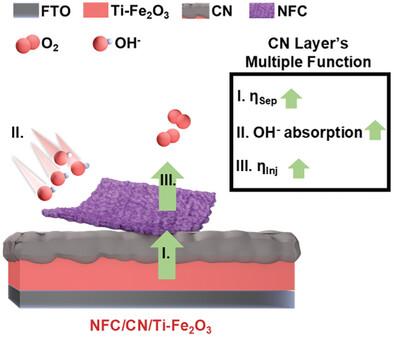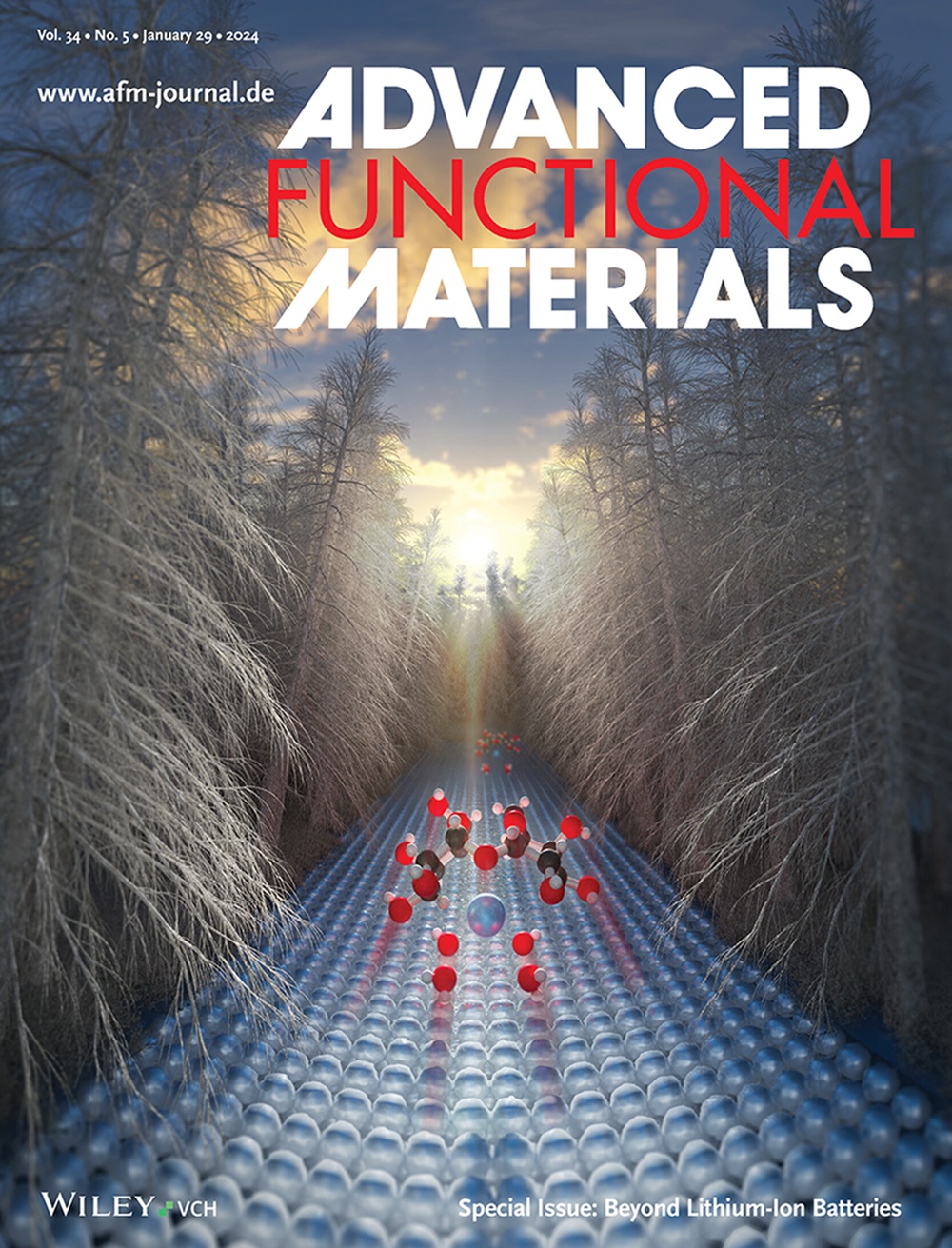Revealing the Multiple Function of Nitrogen-Doped Carbon Layer in Hematite-Based Photoanode for Photoelectrochemical Water Oxidation
IF 18.5
1区 材料科学
Q1 CHEMISTRY, MULTIDISCIPLINARY
引用次数: 0
Abstract
Incorporating the charge transfer medium between semiconductor and cocatalyst accelerates the separation of photogenerated charges, enhancing the photoelectrochemical water oxidation performance. However, the structure regulation of cocatalyst in situ generated by the transfer medium is usually neglected, which would alter the injection efficiency of photogenerated holes. Besides, more relevant technologies are necessary to investigate the intrinsic action of each part on water oxidation. Herein, a novel triadic photoanode is designed rationally, involving Ti-doped hematite (Ti-Fe2O3) core, nitrogen-doped carbon (CN) interlayer, and Ce-doped NiFe-LDH (NFC) shell. The results like single-molecule fluorescence and short-pulse transient photocurrent experiments reveal CN not only employs as a hole transfer layer to facilitate bulk charge transfer and suppress back recombination, but also polishes up the OH− absorption in conjunction action with NFC. Furthermore, CN exhibits an additional functionality by inducing oxygen vacancies and more Ce4+ in NFC to further raise the injection efficiency, expediting the generation of O2 from absorbed OH−. Consequently, NFC/CN/Ti-Fe2O3 presents a significantly higher photocurrent density than NFC/Ti-Fe2O3, accomplishing a photocurrent density of 2.87 mA cm−2 at 1.23 V versus RHE. The design of the multiple-functional CN exhibits a strategic approach for regulating the reactant absorption and photogenerated hole transfer, thereby enhancing the water oxidation performance.

在半导体和催化剂之间加入电荷转移介质可加速光生电荷的分离,从而提高光电化学水氧化性能。然而,转移介质在原位对催化剂产生的结构调整通常被忽视,这将改变光生空穴的注入效率。此外,还需要更多相关技术来研究各部分对水氧化的内在作用。本文合理设计了一种新型三元光阳极,包括掺钛赤铁矿(Ti-Fe2O3)内核、掺氮碳(CN)中间层和掺铈镍铁合金-LDH(NFC)外壳。单分子荧光和短脉冲瞬态光电流实验结果表明,CN 不仅可以作为空穴传输层促进体电荷转移和抑制反向重组,还能在与 NFC 的共同作用下抛光 OH- 吸收。此外,CN 还能诱导 NFC 中的氧空位和更多 Ce4+,从而进一步提高注入效率,加快从吸收的 OH- 中生成 O2。因此,NFC/CN/Ti-Fe2O3 的光电流密度明显高于 NFC/Ti-Fe2O3,在 1.23 V 相对于 RHE 时,光电流密度达到 2.87 mA cm-2。多功能 CN 的设计展示了一种调节反应物吸收和光生空穴传输的战略方法,从而提高了水氧化性能。
本文章由计算机程序翻译,如有差异,请以英文原文为准。
求助全文
约1分钟内获得全文
求助全文
来源期刊

Advanced Functional Materials
工程技术-材料科学:综合
CiteScore
29.50
自引率
4.20%
发文量
2086
审稿时长
2.1 months
期刊介绍:
Firmly established as a top-tier materials science journal, Advanced Functional Materials reports breakthrough research in all aspects of materials science, including nanotechnology, chemistry, physics, and biology every week.
Advanced Functional Materials is known for its rapid and fair peer review, quality content, and high impact, making it the first choice of the international materials science community.
 求助内容:
求助内容: 应助结果提醒方式:
应助结果提醒方式:


